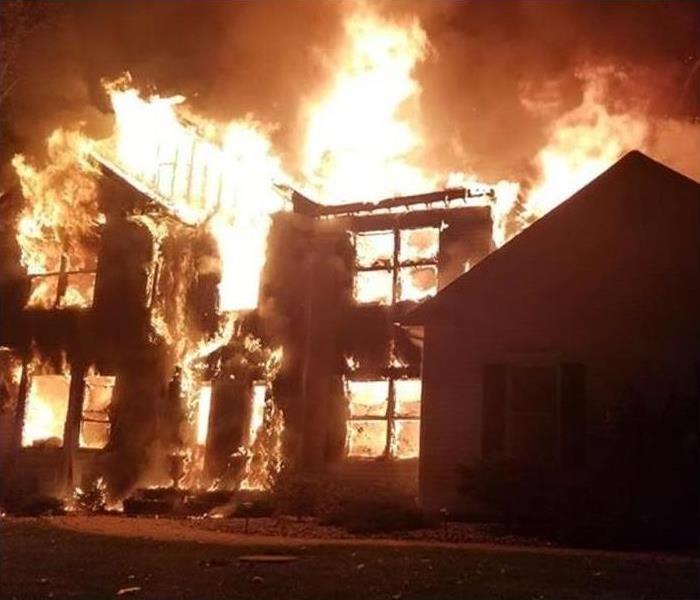How to Prepare Yourself for Fire Disaster
7/12/2021 (Permalink)
Here at SERVPRO of North Knoxville, we are the ones to call if any sort of loss does occur, but we also want to provide our customers and community with resources to minimalize risks that could cause a loss.
Steps to Prepare
The first way to prepare yourself is by knowing where to be the most cautious and aware. The 4 most common types of fires are Kitchen, Electrical, Heater, and Smoking-Related. The Federal Emergency Management Agency (FEMA) reports that in 2018 there were:
- 192,700 cooking fires
- 35,700 heating fires.
- 28,600 Other unintentional, careless fires.
- 25,700 electrical malfunction fires.
The second way to prepare yourself is to be informed about some of the awareness information about fires.
The leading cause of death in a fire is asphyxiation, by a three-to-one ratio over burns. Fire consumes the oxygen in the air while increasing the concentration of deadly carbon monoxide and other toxic gases in the atmosphere. Inhaling carbon monoxide can cause loss of consciousness or death within minutes.
1. The heat from a hostile fire exceeds anything to which a person is normally exposed. A fully developed room fire has temperatures over 1,100 degrees Fahrenheit.
2. Fire generates a black, impenetrable smoke that blocks vision and stings the eyes. It is impossible to navigate through such smoke, so fire drill participants should practice evacuating buildings by at least two routes.
3. Fire generates a black, impenetrable smoke that blocks vision and stings the eyes. It is impossible to navigate through such smoke, so fire drill participants should practice evacuating buildings by at least two routes.
If you want more statistics on residential house fires click here.
Here are the final ways to ensure you are prepared for a fire disaster:
- Develop a Family Disaster Plan.
- If smoke alarms are not already in place, install them outside each sleeping area and on each additional level of your home in accordance with local codes.
- Draw a floor plan of your home; mark two fire escape routes for each room.
- Consider escape ladders for sleeping areas on the second or third floor.
- Burglar bars and locks that block outside window entry must be easy to open from the inside. If a key is required to open bars or locks, keep a key near each window to use for fire escape. Quick-release devices are available for security bars. If smoke or fire is blocking the main exit, you must be able to use your alternate routes quickly.
- Select a safe outside meeting place for everyone to meet after escaping from a fire.
- Conduct a home fire drill at least twice a year with all members of your household.





 24/7 Emergency Service
24/7 Emergency Service
